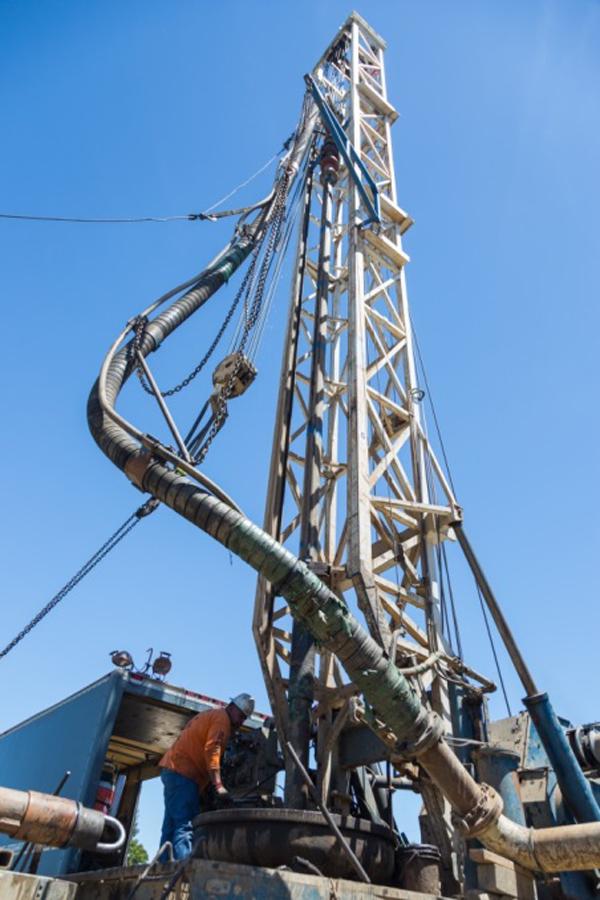A wishing well with a stone covered basin and a bucket cranked by hand that brings water from deep inside a hole resonates among fairy tale fans. Throwing a coin into a wishing well is said to bring good luck.
Reaching deep into the ground to bring cool and pure water to the surface is reality and not make-believe. Many water companies, including San Jose Water, depend on wells to provide safe, high quality, and reliable water service to its customers. It’s a key part of our infrastructure.
A new well under construction in 2017
SJW has over 100 active wells in our service area. In a typical year, wells provide about 35% of SJW’s water supply. Imported water from the Sierra Nevada Mountains and local surface water make up the remaining sources.
In severe droughts, groundwater can provide almost 60% of the water supply. If a significant earthquake cut off water supply from the Sacramento-San Jose Delta for a period of time, it could be the source for almost 100% of the supply.
With such a significant role, wells deserve substantial attention. A typical well can last for 50 to 75 years and SJW constantly monitors all wells from both a water production and water quality standpoint. When wells are no longer used and useful, they are retired and filled with concrete to prevent contamination and protect the water supply.
Nationally, the nation’s water infrastructure earned a “D” grade in the 2017 Infrastructure Report Card. In California, about $44.5 billion is needed to meet drinking water needs. SJW is committed to maintaining and improving its infrastructure needs and wells are a top priority.
All our wells are closely monitored on a regular basis. Like all water system components, a well’s performance will diminish over time. As part of a carefully reviewed infrastructure plan, SJW identifies wells that have poor production, problems with sand infiltration, or structural problems.

Thomas Gee, SJW's Director of Engineering, Special Facilities, inspects one of the company's well sites
Because wells do age and the average age of SJW is 57 years old there is a well replacement plan in place. Modern wells should preserve hydraulic performance for longer periods of time than older wells installed prior to 1970. On average, SJW plans to replace two wells per year. Thomas Gee, Director of Engineering, Special Facilities, elaborates, “Maintaining existing wells and replacing older facilities are key parts of SJW’s infrastructure program. We are committed to updating our system to meet increasingly stringent water quality requirements while also striving for water and energy efficiencies to protect the environment.”

A typical well in our service area
New well sites need to be identified, purchased, and permitted by the Regional Water Quality Control Board, the Santa Clara Valley Water District and the California Department of Drinking Water. This is a lengthy process and can take up to two years to complete prior to the actual well being installed!
In 1866, SJW began with one well and two raised wooden tanks in downtown San Jose and served 400 local residents. Today, the company serves more than a million residents with safe, high quality, and reliable water service in the greater San Jose area and wells still play an important part in its operations. We take our commitment to the community seriously and work tirelessly to make sure our infrastructure is here for current and future customers.
